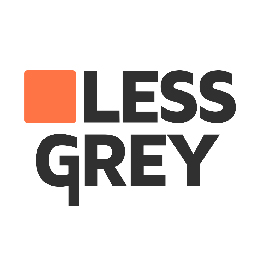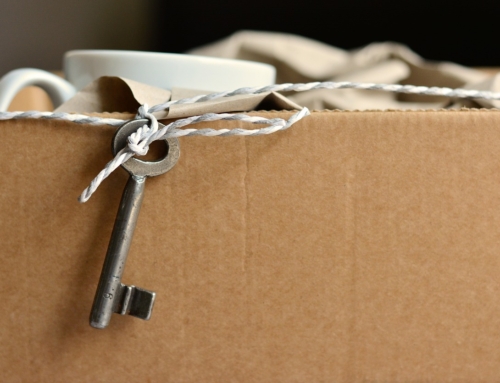If VAT is your headache, meet your aspirin
VAT. It's a four-letter word (maybe not literally) that strikes fear into the hearts of even the most seasoned e-commerce businesses, especially those that sell to customers in the EU. That's because VAT compliance can be a complex and time-consuming process, especially since Brexit.
If you're selling goods to customers in the EU, you need to be aware of the IOSS and OSS VAT regulations. These schemes are designed to simplify the VAT compliance process for businesses selling low-value goods to EU customers.
But don't let the name fool you. The IOSS and OSS are anything but simple. The rules are complex and constantly changing. And if you get it wrong, you could be in for a world of pain.
What are the IOSS and OSS schemes?
The IOSS and OSS schemes are two new VAT compliance schemes that were introduced in July 2021. The IOSS scheme is designed for businesses that sell low-value goods (worth less than EUR 150) to customers in the EU from outside the EU. The OSS scheme is designed for businesses that sell goods (of any value) to customers in the EU from within the EU.
Both the IOSS and OSS schemes allow businesses to register for VAT in one EU country and then account for VAT on all of their sales to EU customers through that one registration. This can save businesses a lot of time and money, as they no longer have to register for VAT in each individual EU country where they sell goods.
How do the IOSS and OSS schemes work?
The IOSS scheme is relatively simple to use. Businesses that sell low-value goods to customers in the EU from outside the EU need to register for the IOSS scheme in one EU country. Once they are registered, they can collect VAT on their sales to EU customers at the point of sale. And the imports are exempt from VAT.
The OSS scheme is a little more complex, but it is still relatively straightforward. Businesses that sell goods (of any value) to customers in the EU from within the EU simply need to register for the OSS scheme in one EU country. Once they are registered, they can collect VAT on their sales to EU customers at the point of sale, and then submit a single VAT return to the EU each quarter. The complexity consists of having to deliver the goods from within the EU, which in practice means selling from local stock in an EU warehouse.
What are the benefits of the IOSS and OSS schemes?
There are several benefits to using the IOSS and OSS schemes. First, they can save businesses a lot of time and money. As mentioned above, businesses that register for the IOSS or OSS schemes no longer have to register for VAT in each individual EU country where they sell goods. This can save businesses a significant amount of time and money in terms of registration fees, compliance costs, and administrative overhead.
Second, the IOSS and OSS schemes can simplify VAT compliance. The IOSS and OSS schemes are designed to be relatively easy to use. This can make it easier for businesses to comply with VAT regulations and avoid costly mistakes.
Third, the IOSS and OSS schemes can improve customer experience. By collecting VAT at the point of sale, businesses that use the IOSS and OSS schemes can ensure that their customers are not surprised by unexpected VAT charges when their goods arrive. This can help to improve customer satisfaction and loyalty.
What are the drawbacks of the IOSS and OSS schemes?
There are a few drawbacks to using the IOSS and OSS schemes. First, the schemes are relatively new, so there is still some uncertainty about how they are interpreted and enforced. For example, the reporting of corrections can result in queries and notices from tax authorities, even though it is allowed to make these corrections under the EU VAT rules. Second, the schemes are not available to all businesses. For example, businesses that sell goods that are subject to excise duties are not eligible to use the IOSS scheme. Thirdly, the biggest drawback for the IOSS scheme is that it can only be used for consignments with a value below EUR 150. Especially with the e-commerce market still growing daily, the number of parcels with a value over this threshold increases, which means that these webshops must find another solution, usually resulting in more compliance.
The complexity of IOSS and OSS compliance has also been compounded by Brexit
Since the UK left the EU, businesses selling goods to customers in the EU from the UK have had to register for IOSS. This has added an extra layer of complexity to VAT compliance for UK businesses.
In addition, the UK government has introduced its own set of rules governing VAT on imported goods. These rules are different from the EU rules, and they can be confusing to businesses.
If you're a UK business selling goods to customers in the EU, or a non-EU business selling into the UK and the EU, you need to be aware of both the EU and UK rules on VAT on your B2C sales. You need to make sure that you're charging the correct amount of VAT, and that you're filing your VAT returns correctly. If you get it wrong, you could be fined by the tax authorities.
Aspirin for your VAT headache
The IOSS and OSS schemes are a new way to simplify VAT compliance for e-commerce businesses selling to the EU. The schemes offer a number of benefits, including time savings, cost savings, and simplified compliance. However, there are also a few drawbacks to the schemes, such as uncertainty and limited availability.
So, if VAT is your headache, the IOSS and OSS schemes are the aspirin. They can help to simplify VAT compliance and improve customer experience. However, it's important to weigh the benefits and drawbacks of the schemes before deciding whether or not to use them.
But wait, there's more!
In addition to using the IOSS and OSS schemes, there are a number of other things that businesses can do to simplify their VAT compliance for EU sales. These include:
- Keep good records of your sales. This will help you to calculate the VAT that you owe and to file your returns accurately.
- Using a VAT compliance software solution: There are a number of software solutions available that can help businesses to automate their VAT compliance processes.
- Stay up-to-date with the latest changes to the rules. The VAT rules are constantly changing, so it's important to stay informed so that you can comply with the latest requirements.
- Working with a VAT compliance specialist: If you need help with your VAT compliance, then you can work with a VAT compliance specialist.
But remember, even aspirin can have side effects. So, if you're considering using the IOSS or OSS schemes, be sure to talk to your accountant or tax advisor first, to get the correct prescription for your situation!
Ann Jones is Director of Less Grey Ltd, part of the Less Grey Group. The Less Grey Group is specialist in VAT advice, compliance, and refunds. For more information and to book an appointment with one of our advisors, check our website: https://lessgrey.eu/en/



